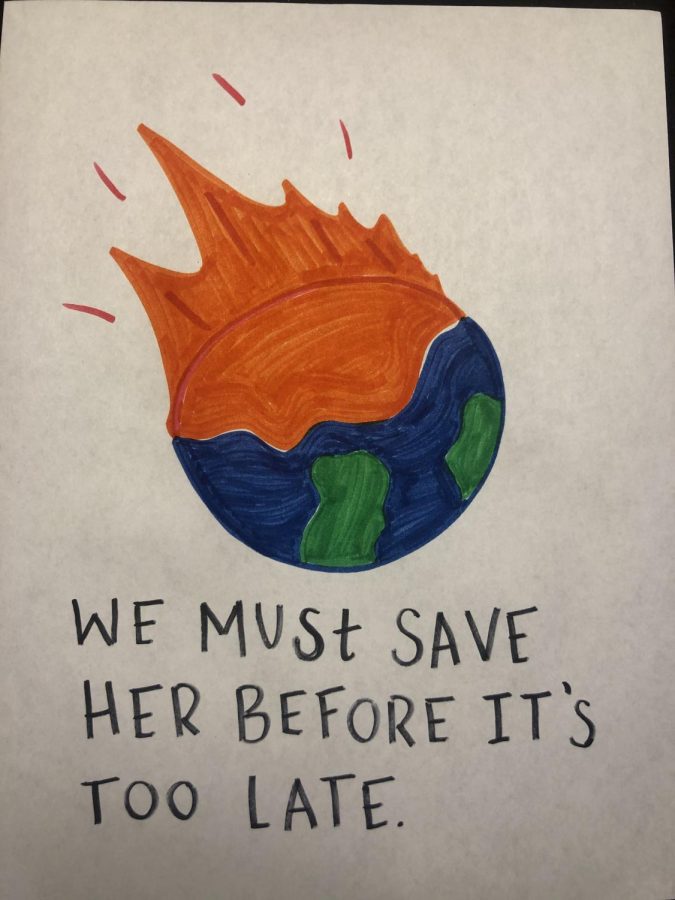Things are Heating up
This graphic promotes the assistance of people to show that they care about the issue of global warming
October was a rough month for the state of California. Wildfires have been running rampant in the northern and southern parts of the state.
The Kincade fire in wine country north of San Francisco has burned through more than 76,000 acres and was 30 percent contained as of October 23 according to NBC News. The reason for these wildfires can be found in the increase in global temperatures.

UC Berkeley dorms were closed for 3 days due to high winds and lack of power from PG&E.
The planet’s average surface temperature has risen about 1.62 degrees Fahrenheit (0.9 degrees Celsius) since the late 19th century, a change driven largely by increased carbon dioxide and other human-made emissions into the atmosphere. Most of the warming occurred in the past 35 years, as claimed by NASA’s global climate change research team. Carbon emissions are emitted from factories and other large industries who own power plants. There are few regulations for these big businesses to be environmentally conscious. They choose to pick profit over protection of mother nature.
Junior Adams student, Kaitlyn Oviatt, thinks that big business making money is the wrong reason to do nothing about this crisis.
“We should be doing everything we can, because it is an environmental issue. This is our planet. We should treat it as the bigger issue that it is. Big companies need to be more self conscious or more informed about what they are doing. They need to be aware of what they are destroying,” said Kaitlyn Oviatt.
This pollution is not completely to blame though. Yes, California does have natural wildfires, but those in recent years and in the past month are out of control. Authorities and government officials have issued warnings for residents to be cautious and aware in case evacuation is needed.
These terrible fires could have been avoided with the reduction of carbon emissions. Carbon emissions heat the air, decreasing moisture for vegetation.
UC Berkeley student resident Rosalie Fang shares her and her friend’s personal experiences this past month:
“I think the worst part of the wildfire is how helpless we all seem before it. PG&E had to cut the power supply due to strong winds in response to the fire hazard, and I know of students whose important research material didn’t survive the power outage, and they have to restart the project and even add another year of grad school. The sad thing is, we can’t do anything besides stay indoors when it’s AQI 150 out,” said Fang.
National Geographic has also done some research on the fires. They believe climate change damage is evident in many of the fires, primarily because hotter air means drier plants. If a plant is dry, it burns more readily.
Senior Emily Morris thinks these dry plants and climate change are a real issue; “Honestly I think we are self-destructing. I’m not really sure how to solve it. Is there a lot we can do? There is so much disagreement in the world, which holds us back from tackling such an innational problem,” said senior Morris.
Having the government acknowledge this issue and take a stand against global warming is necessary for the safety of the people and the planet. These fires must be stopped and facing the issue head on could be the answer.










